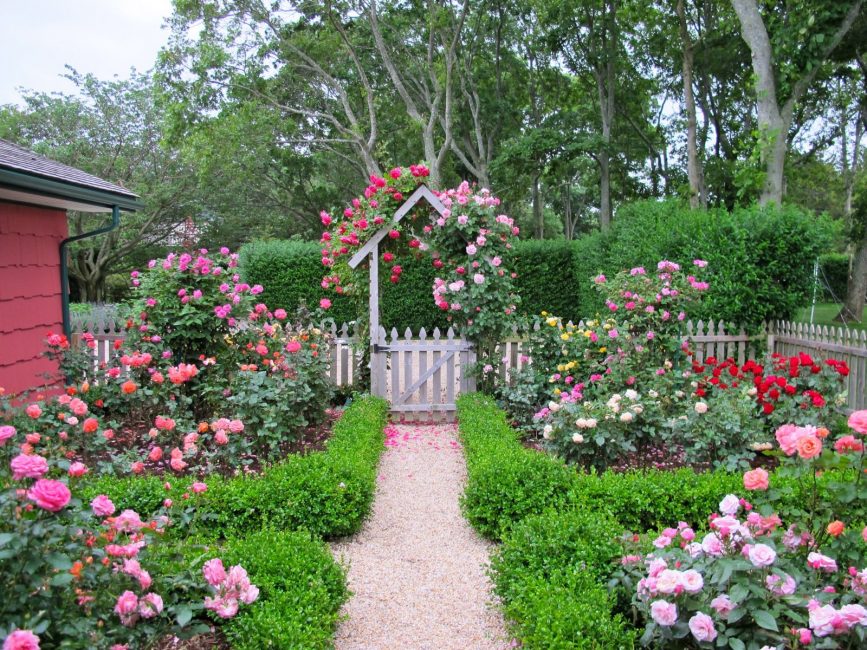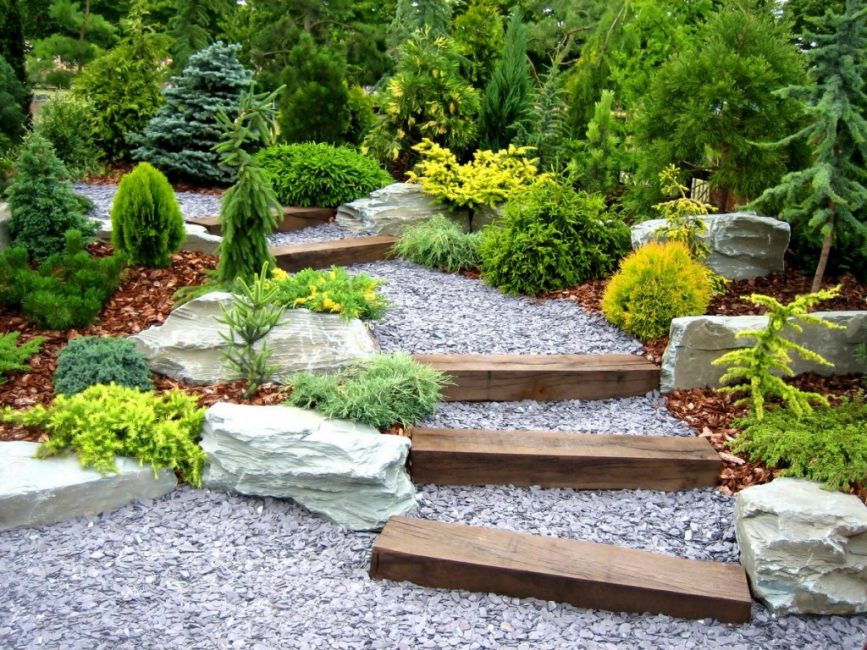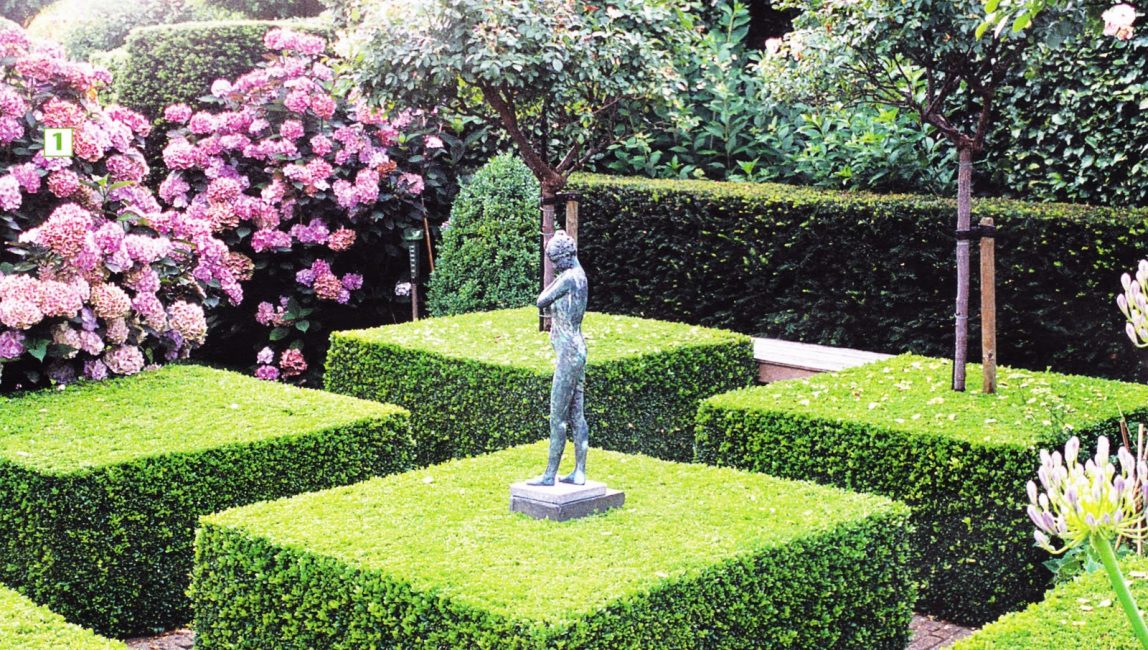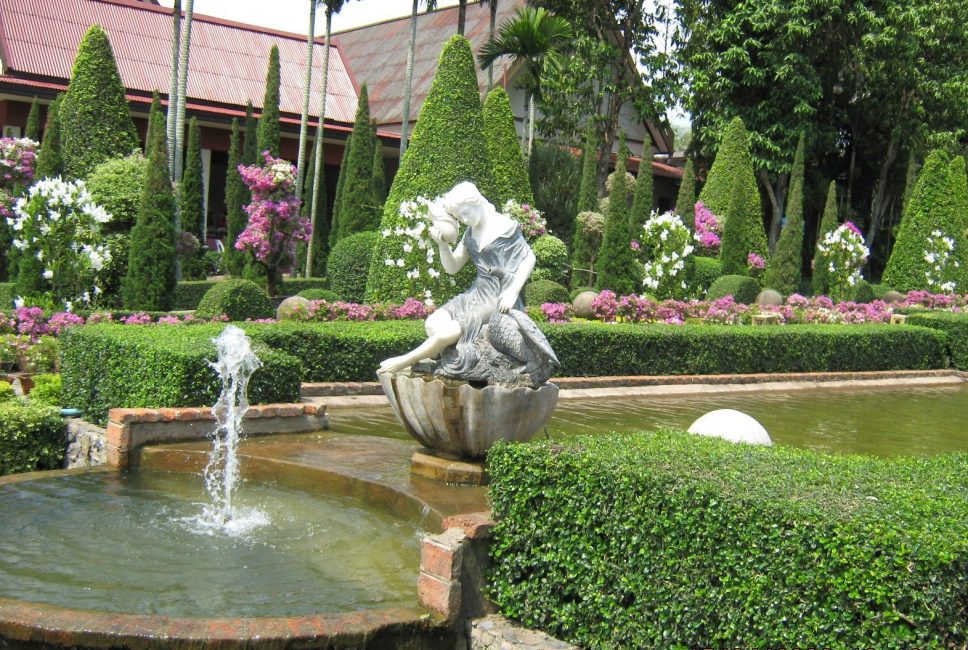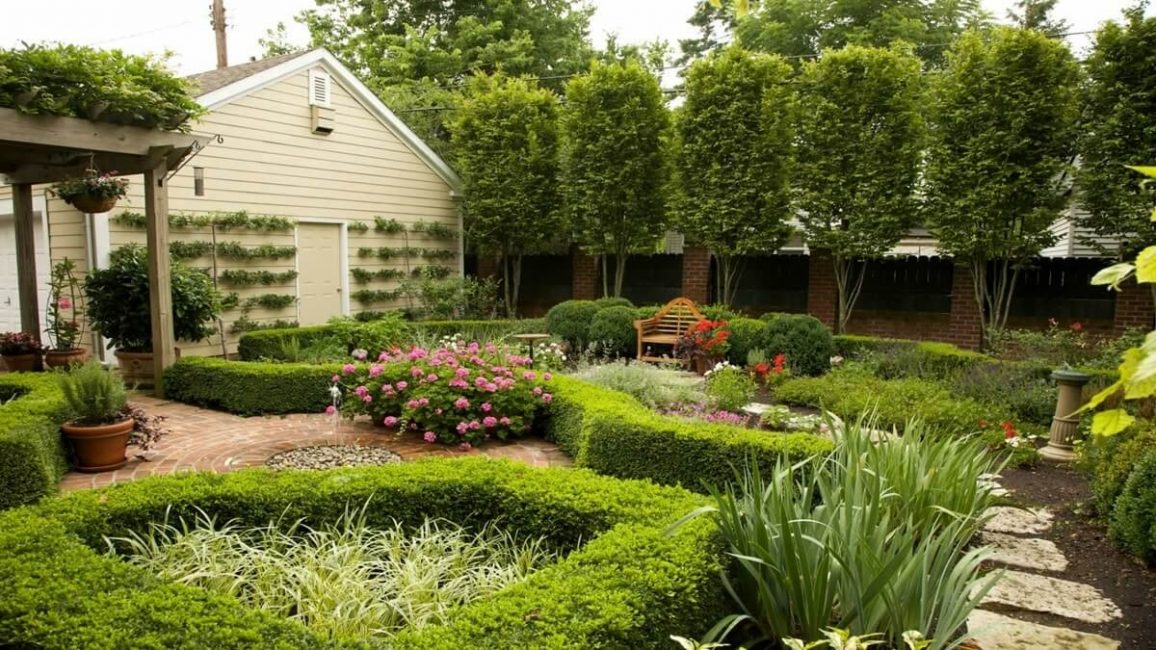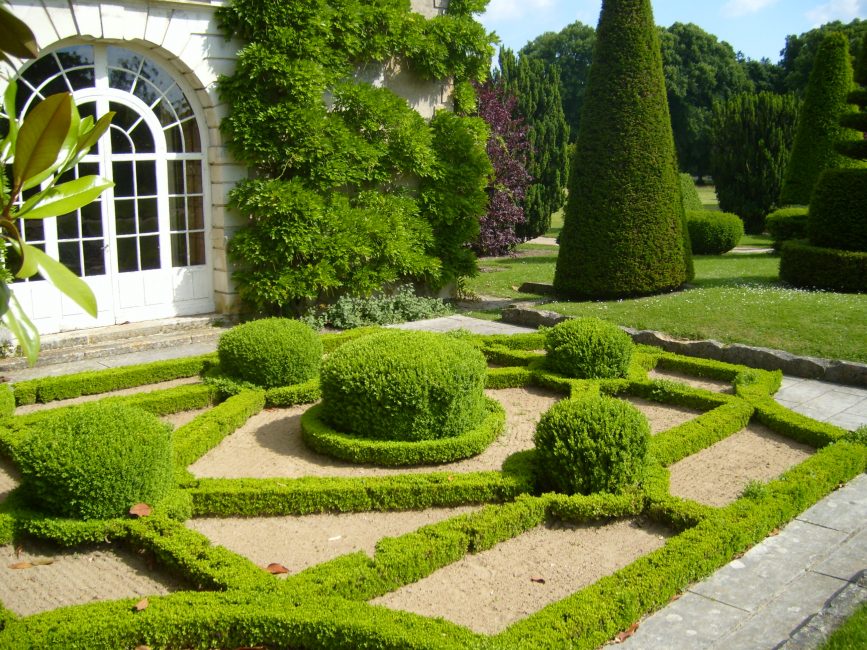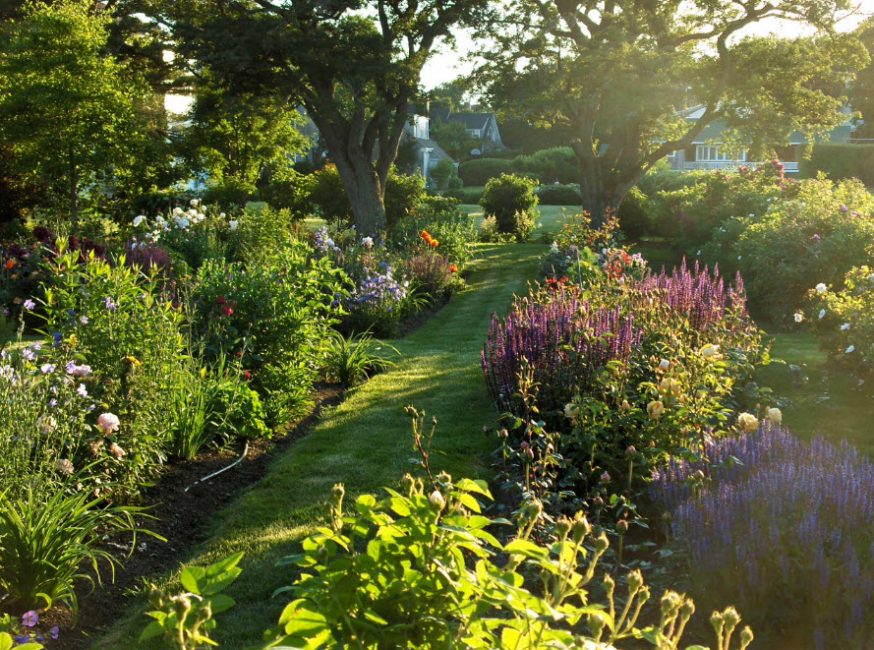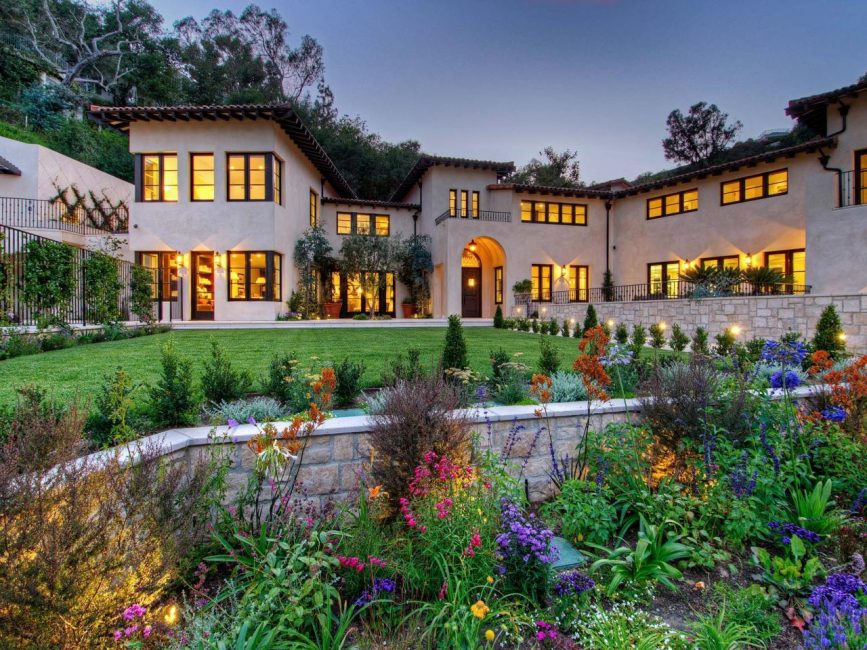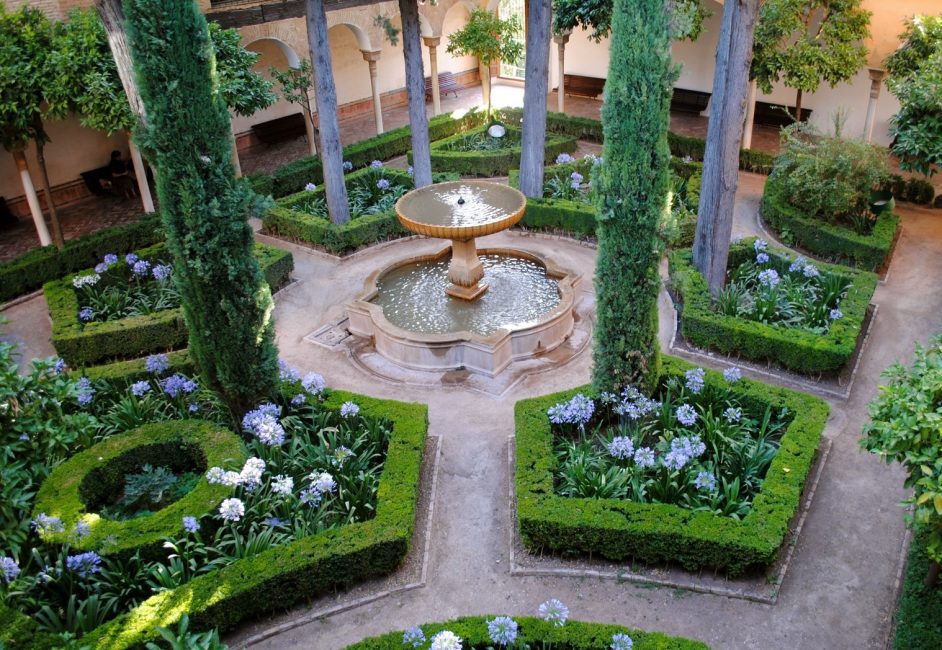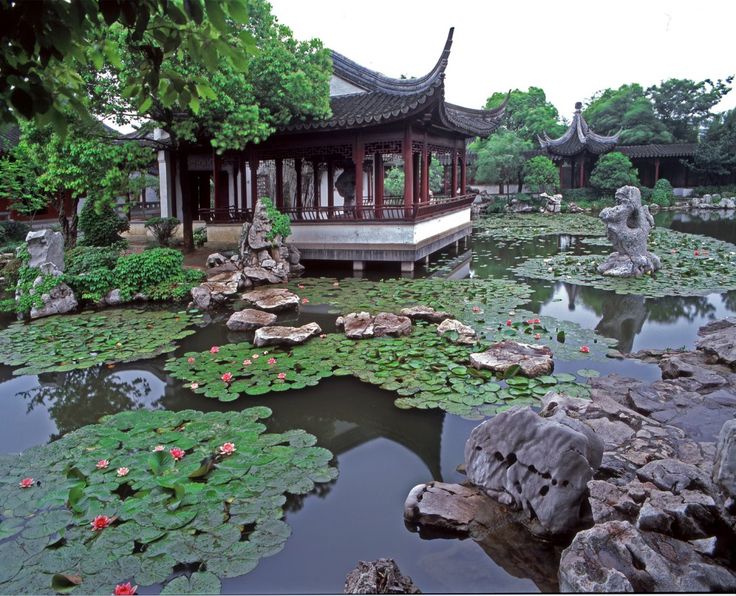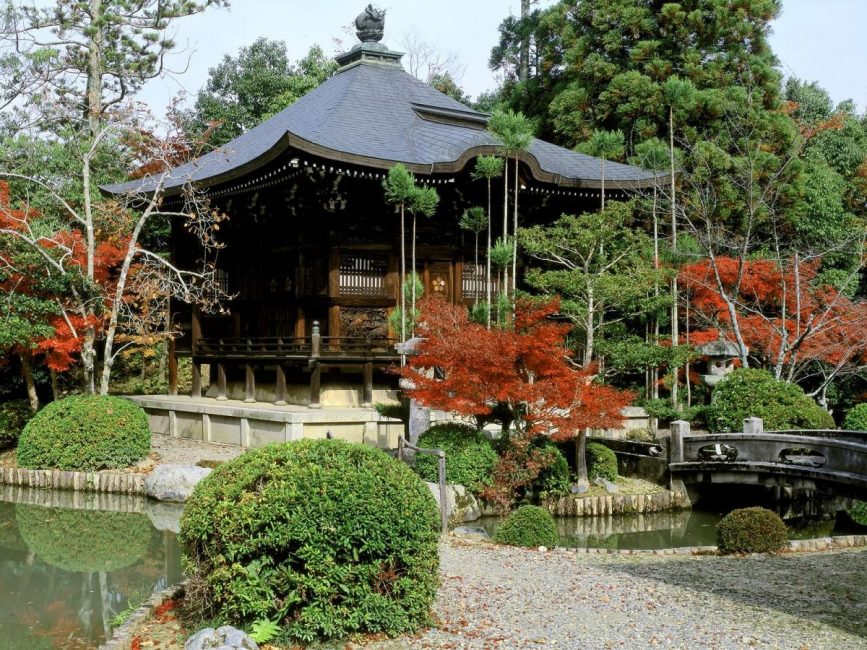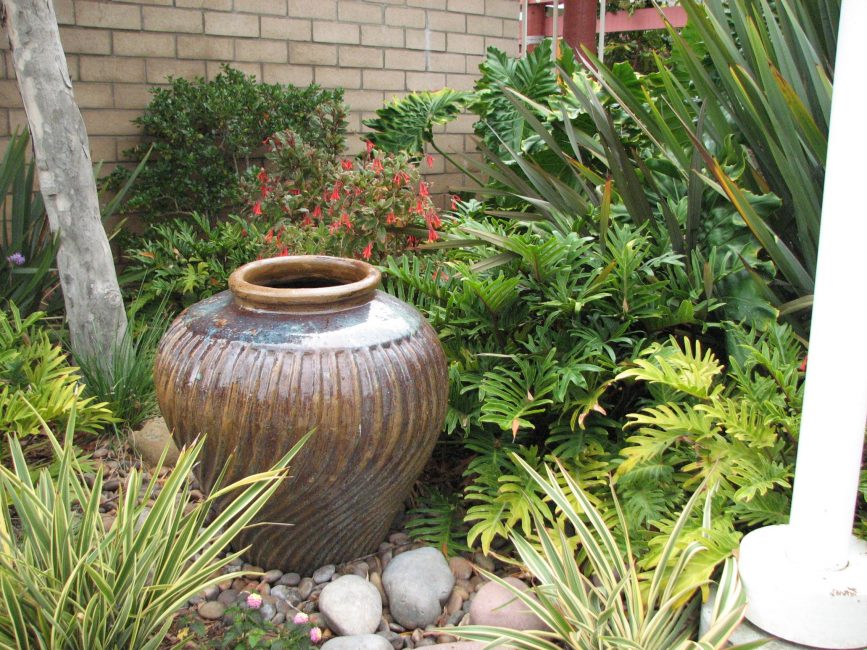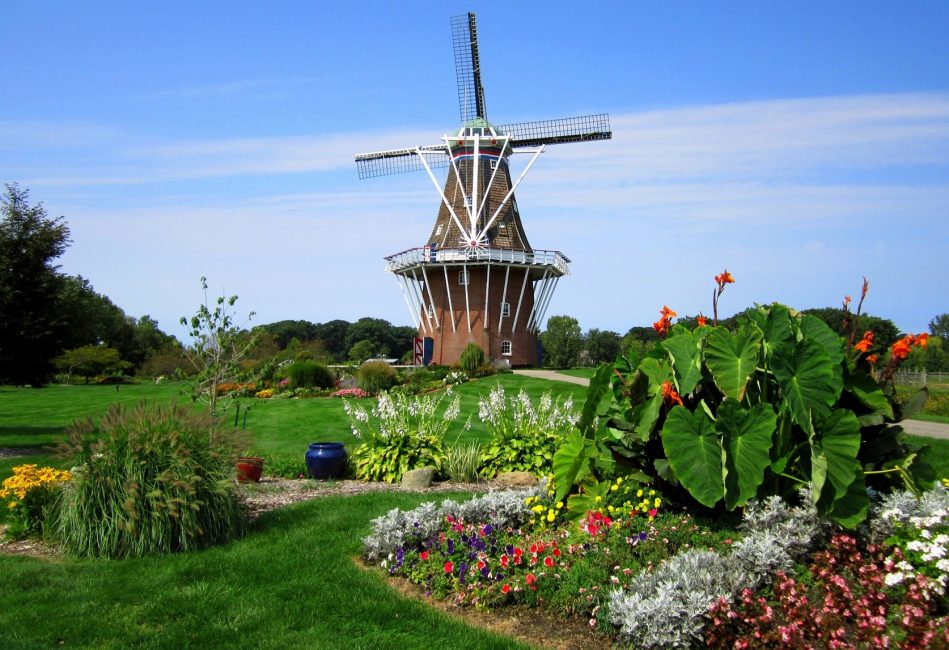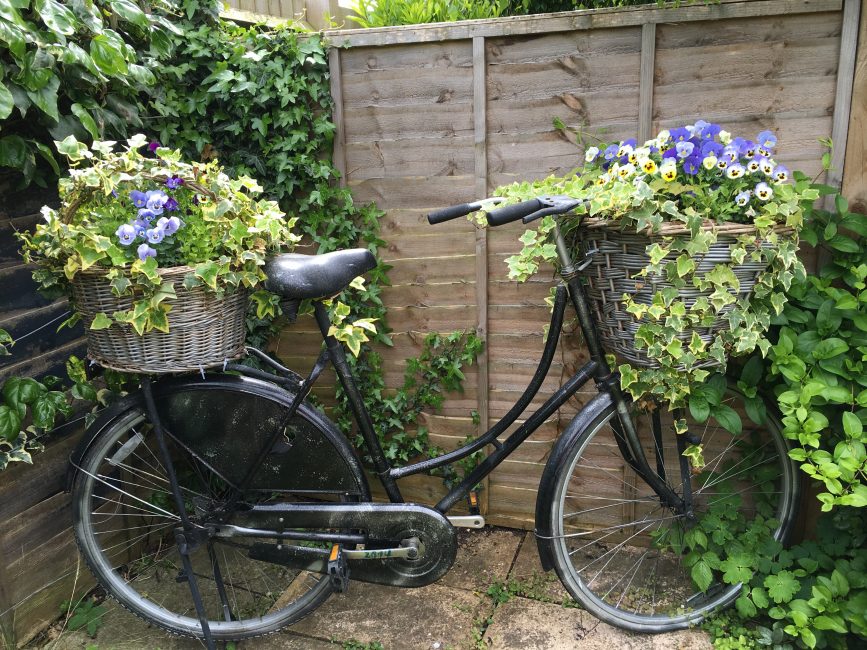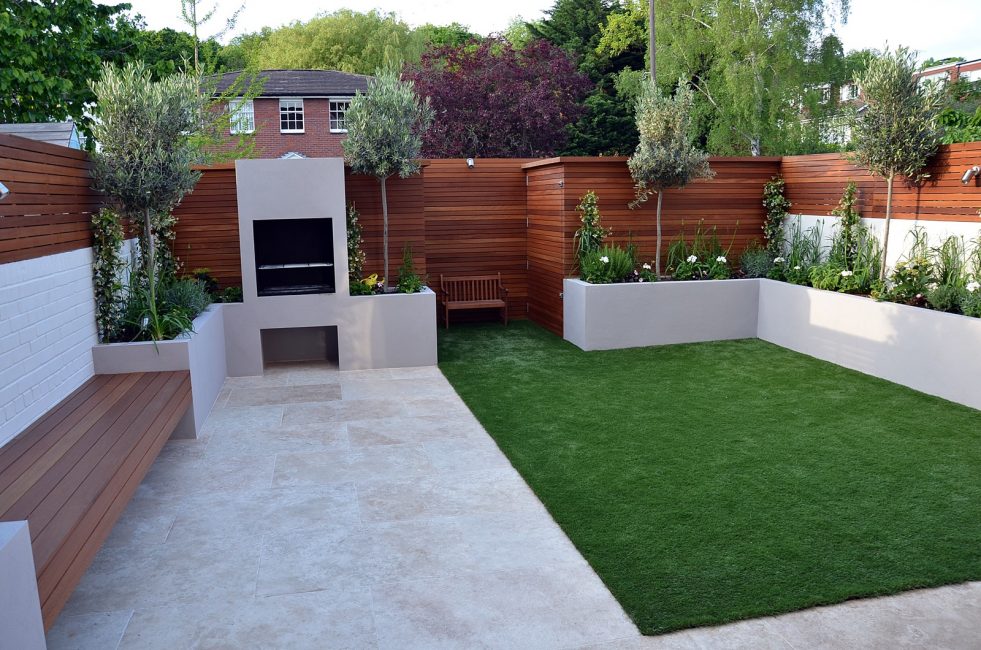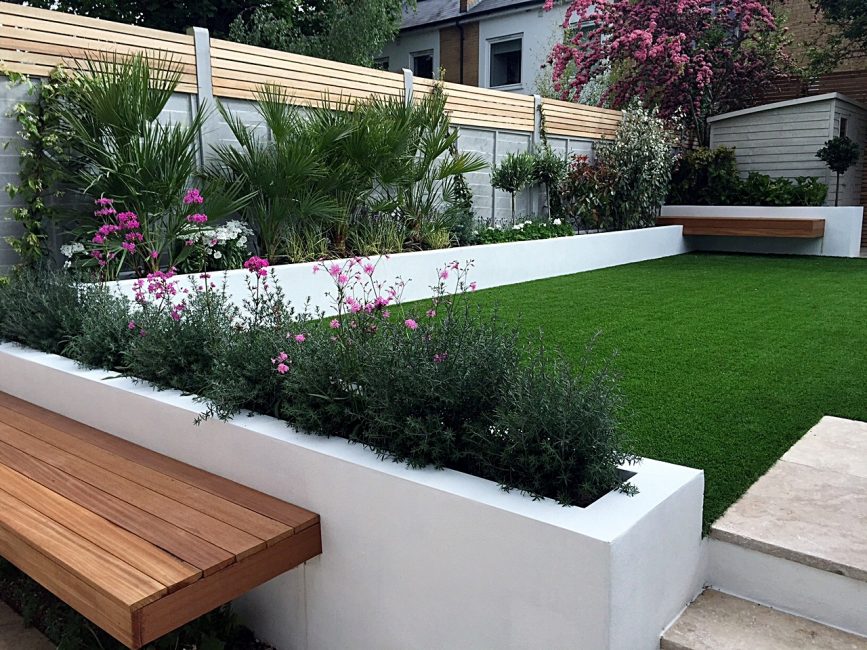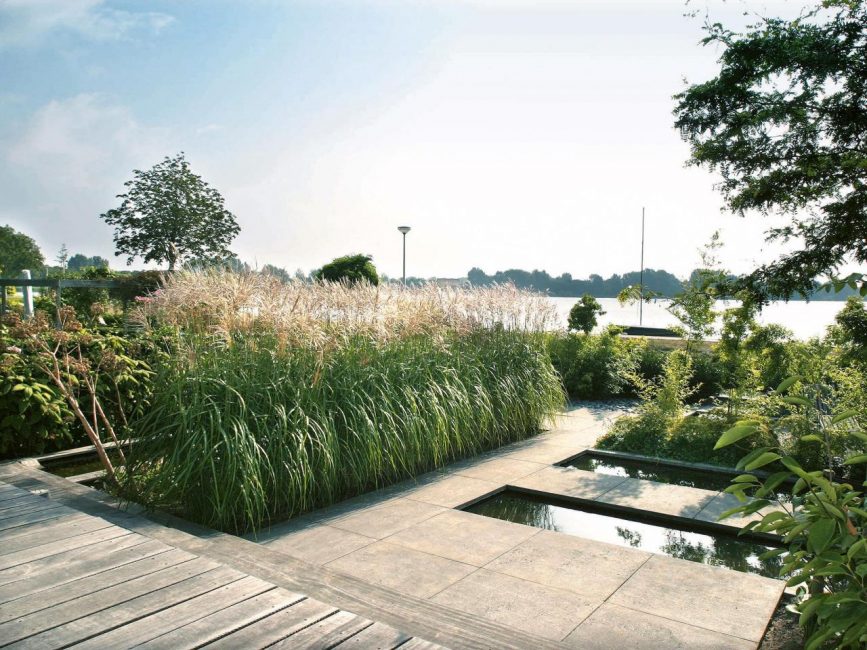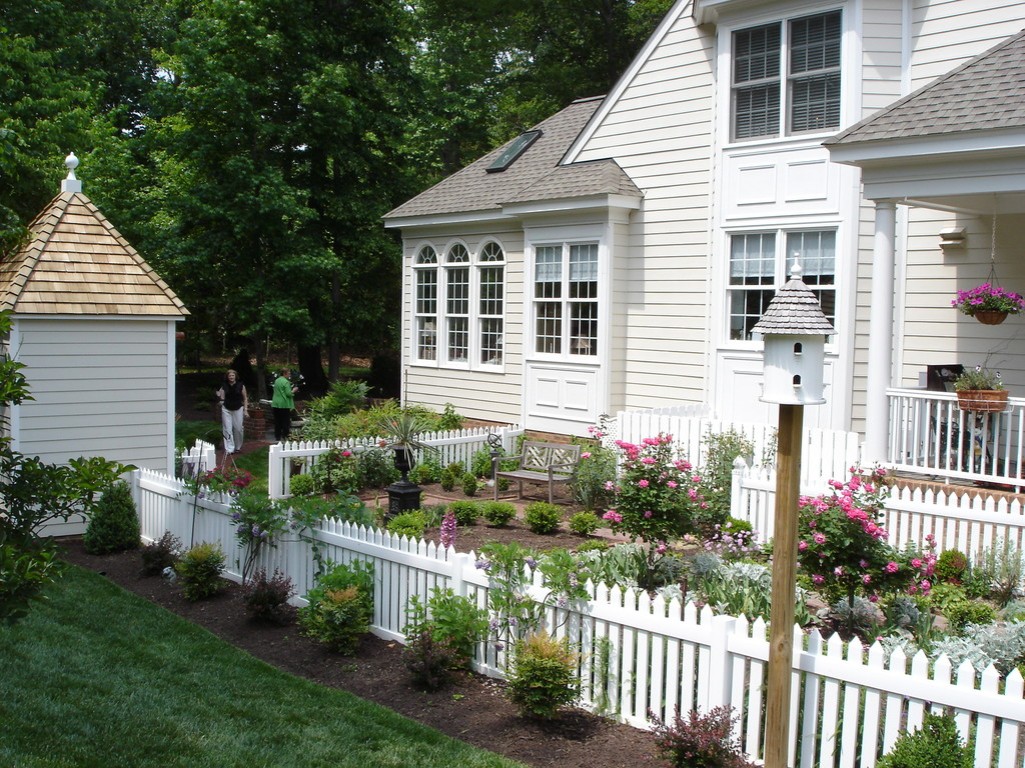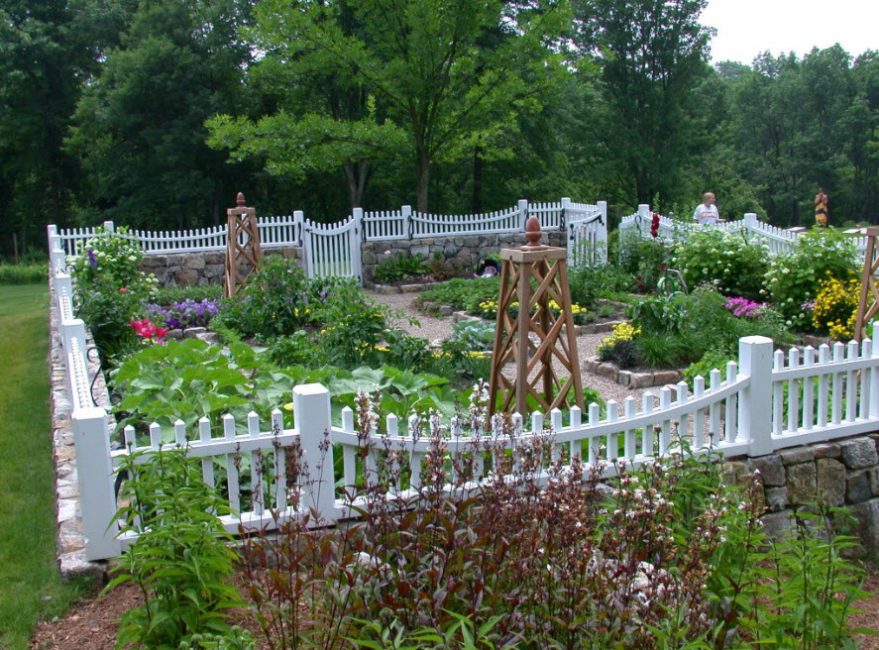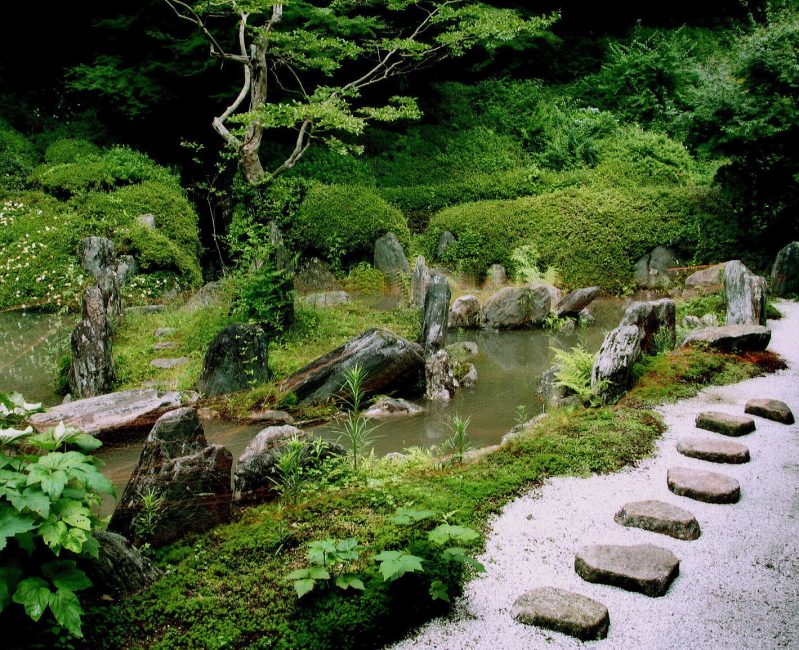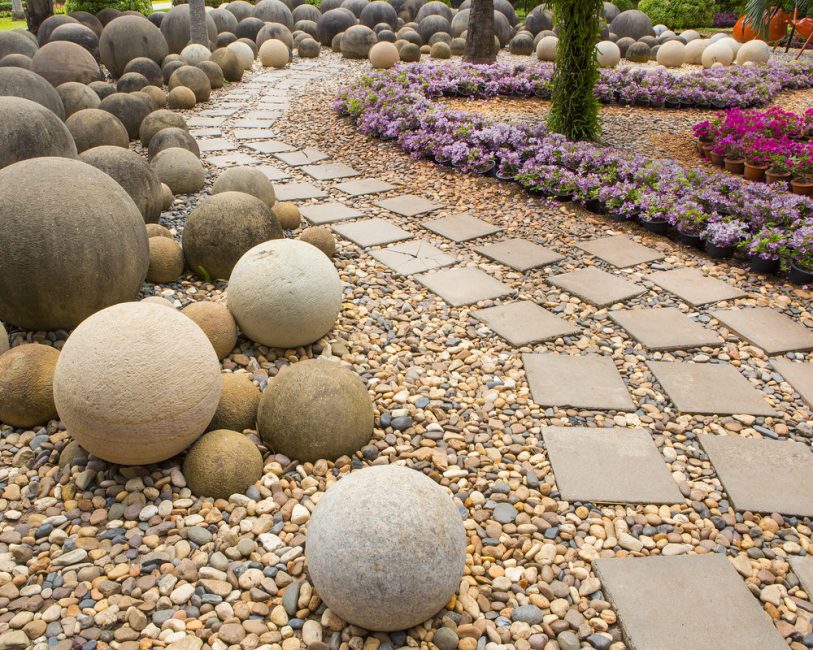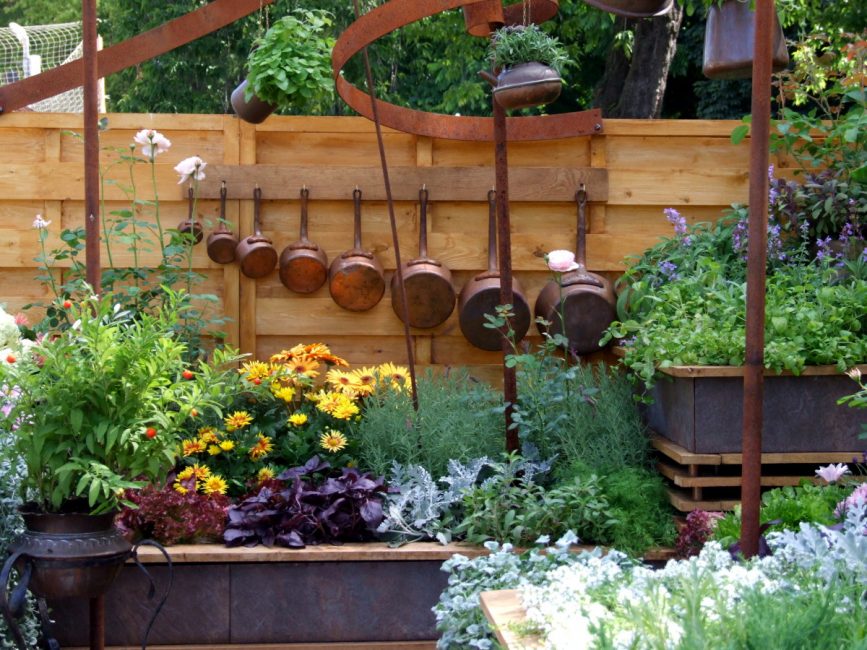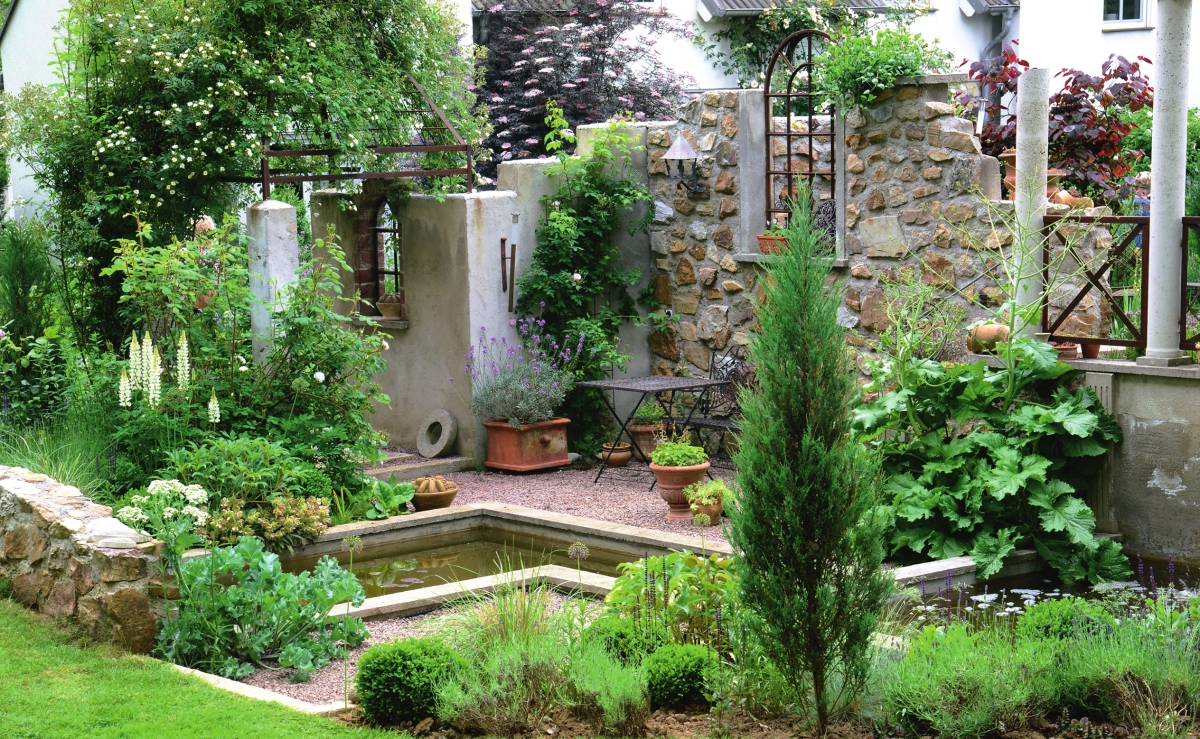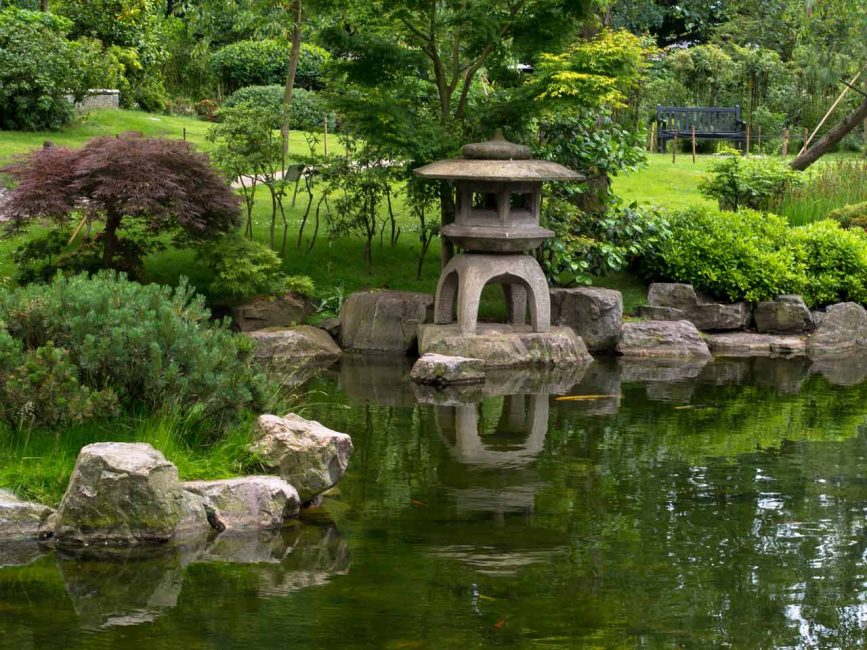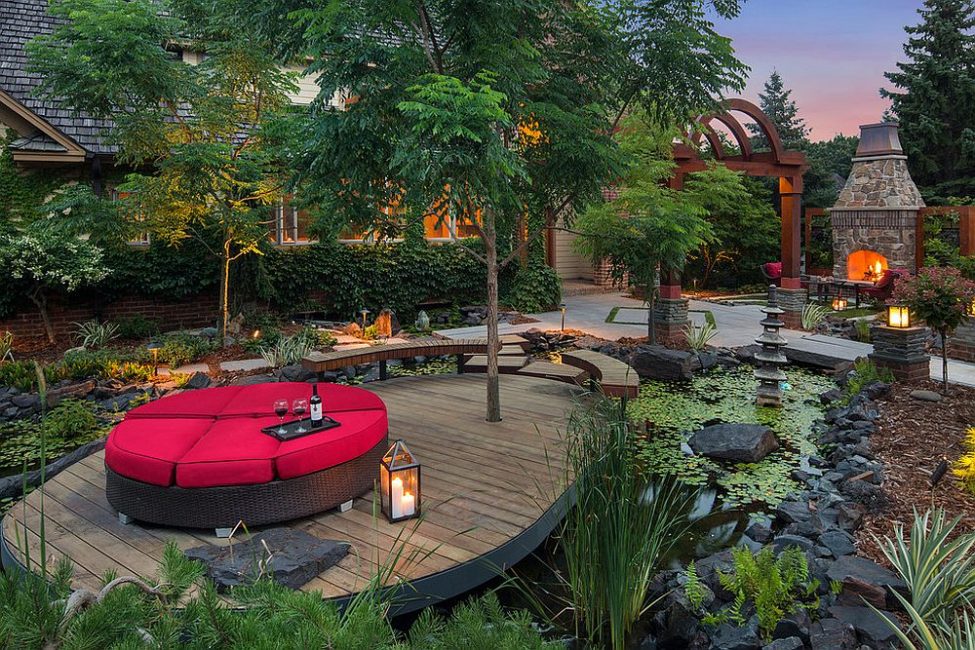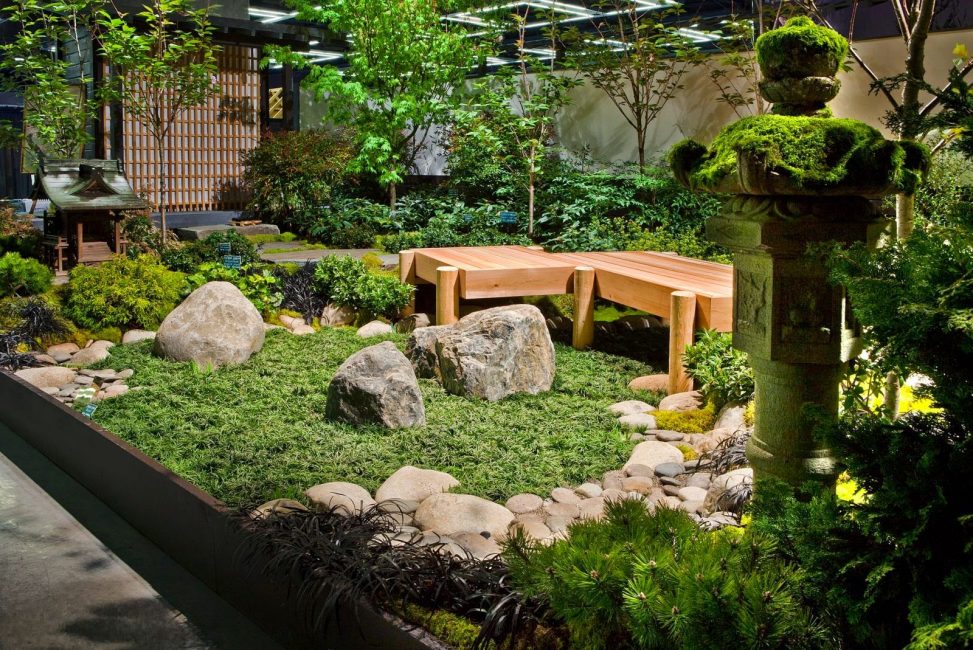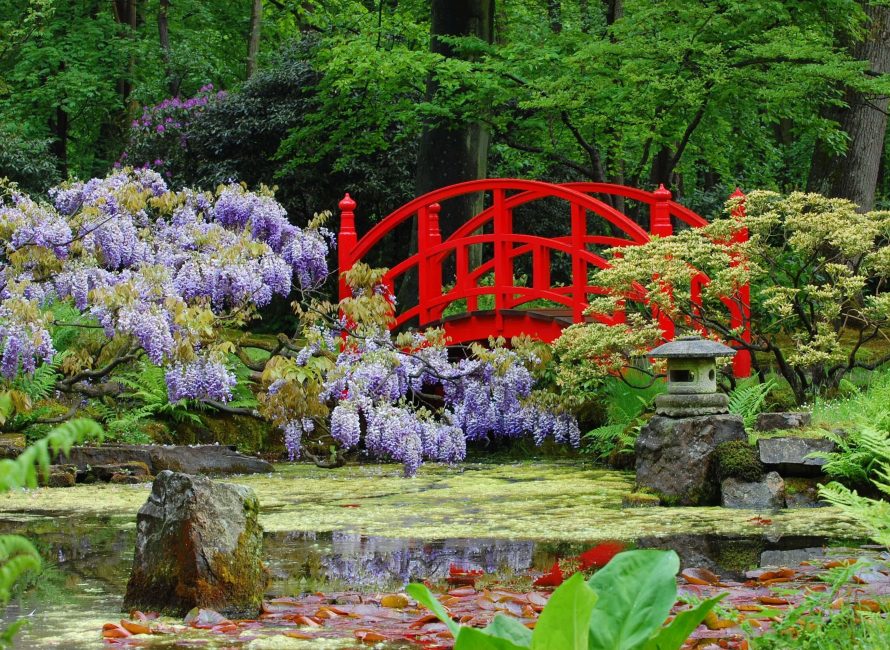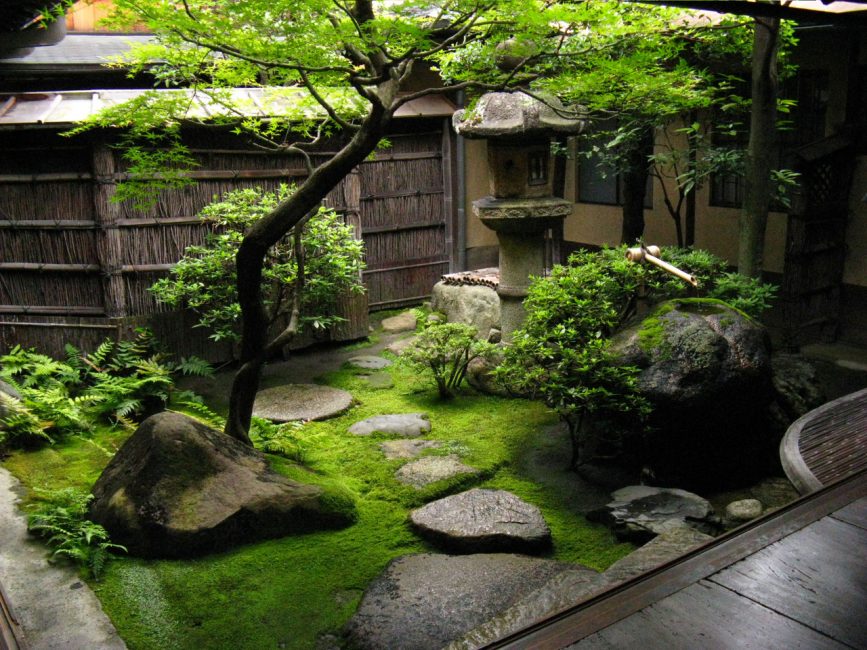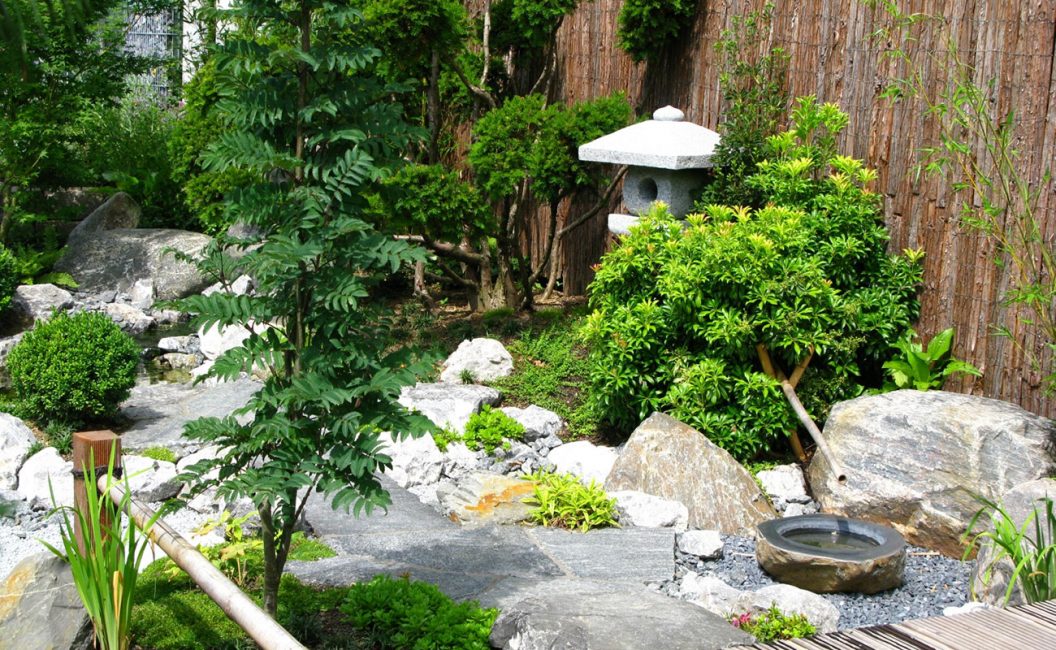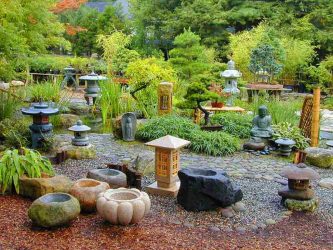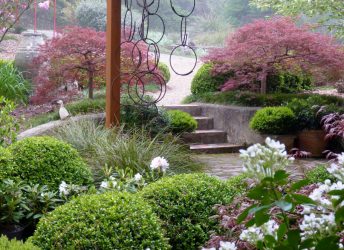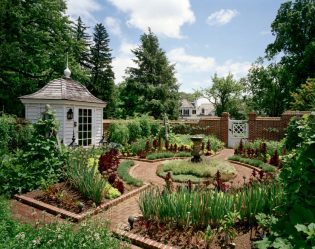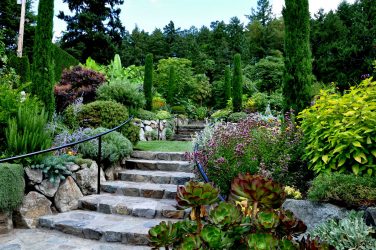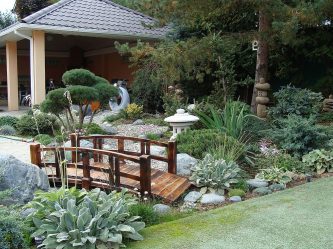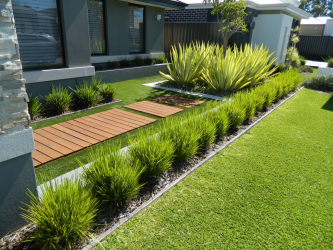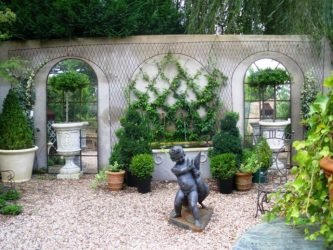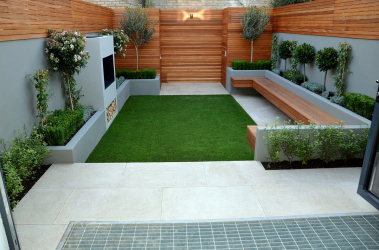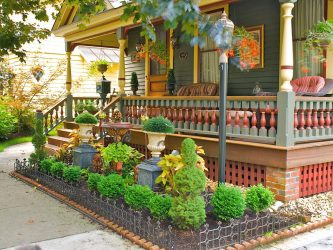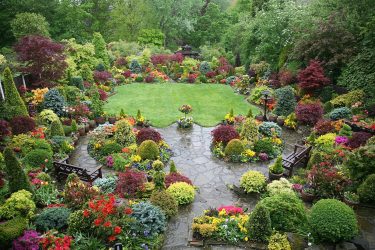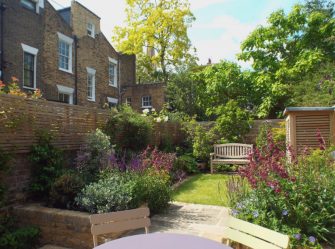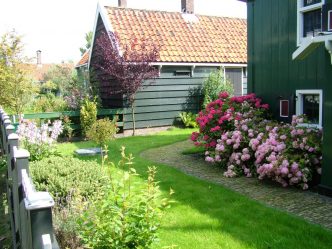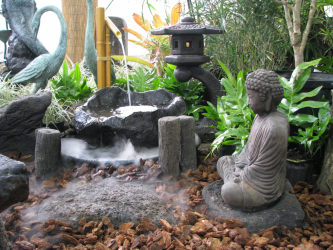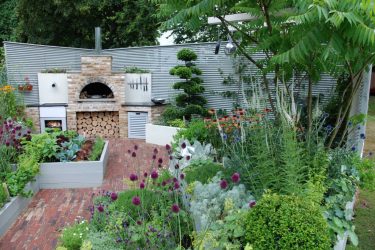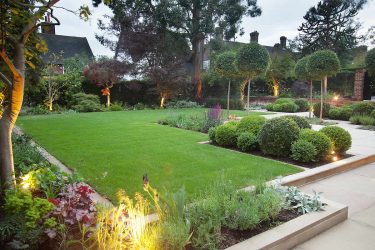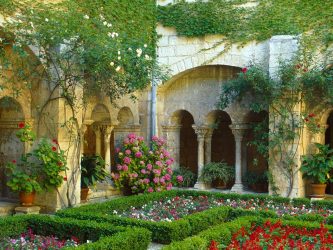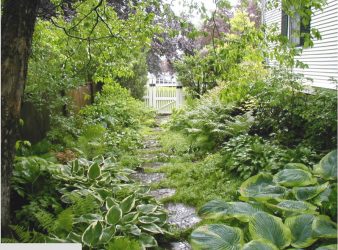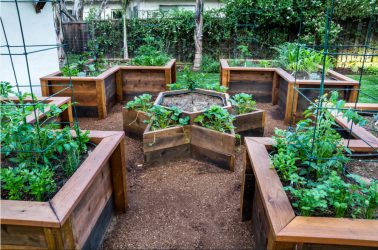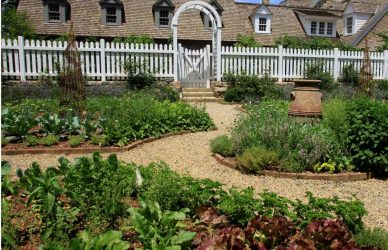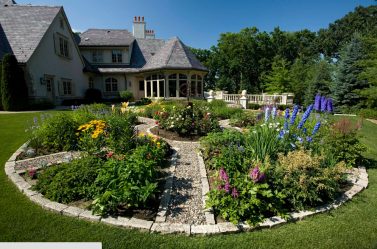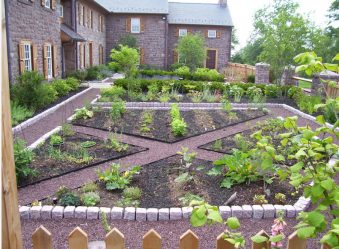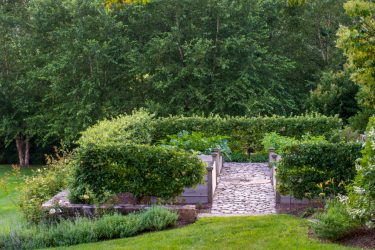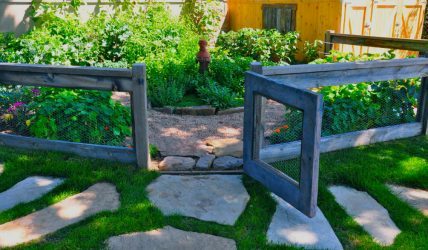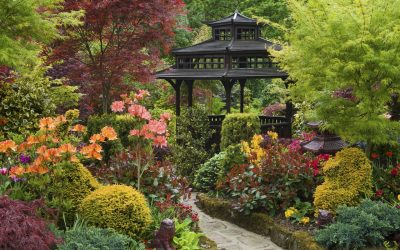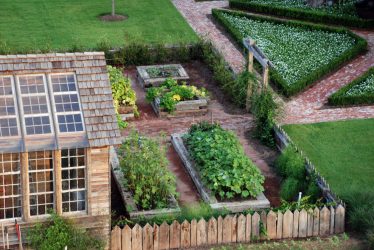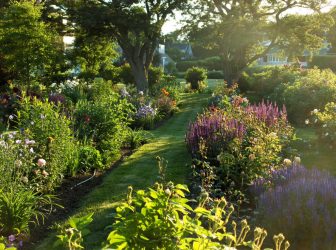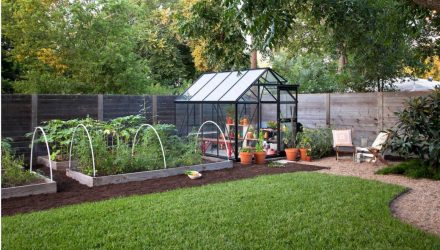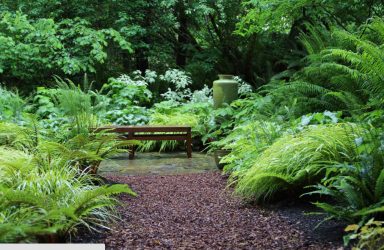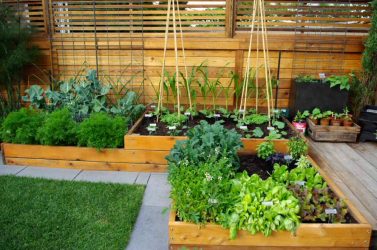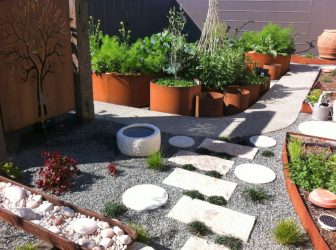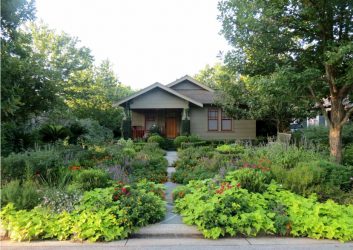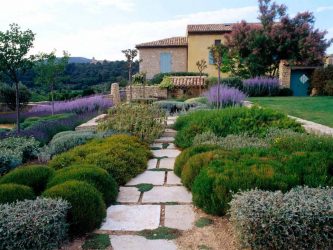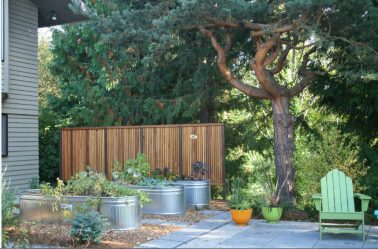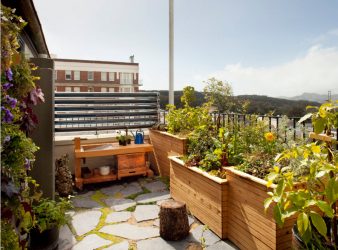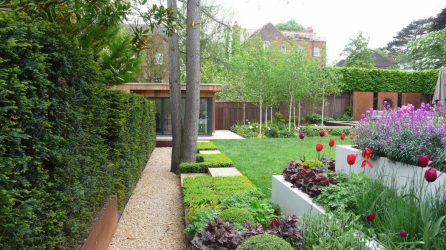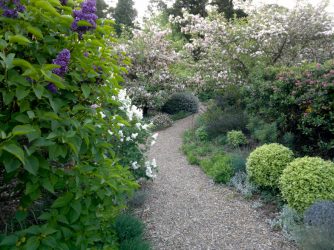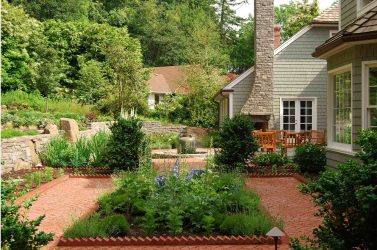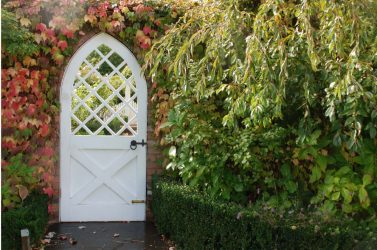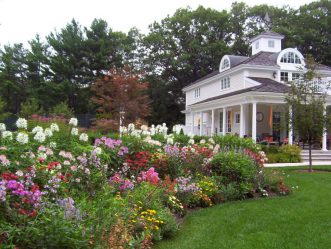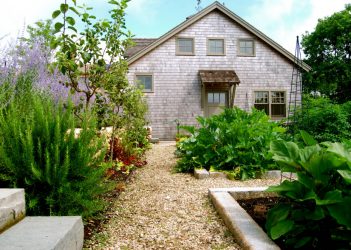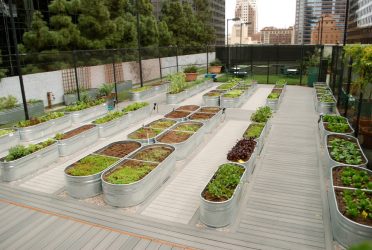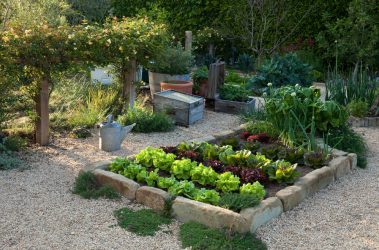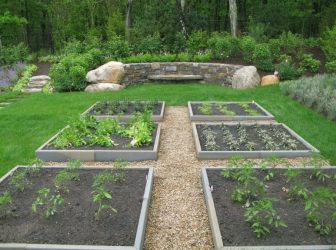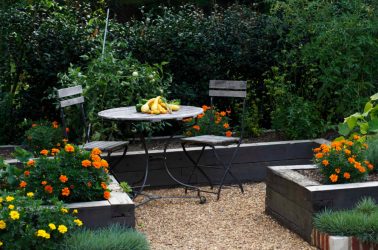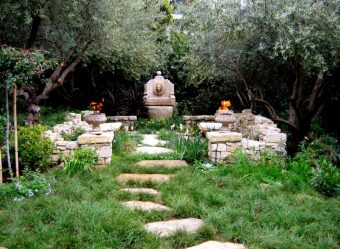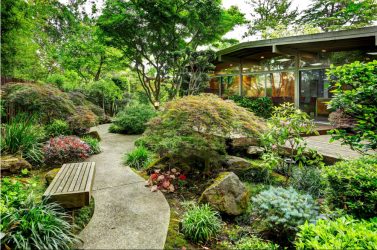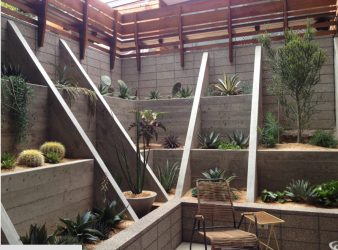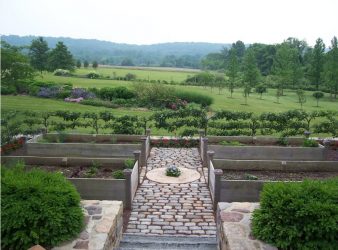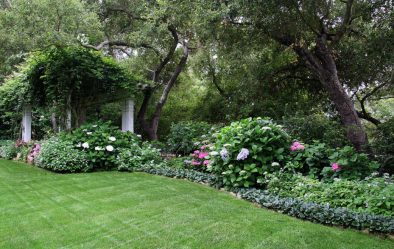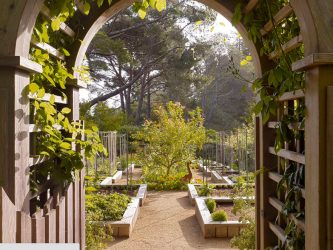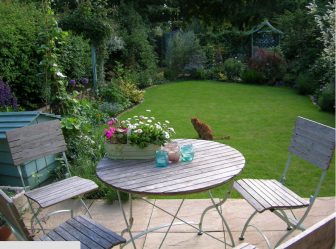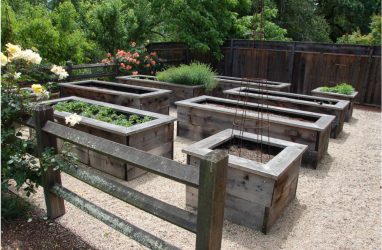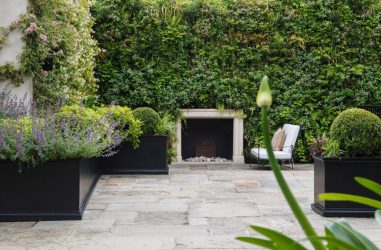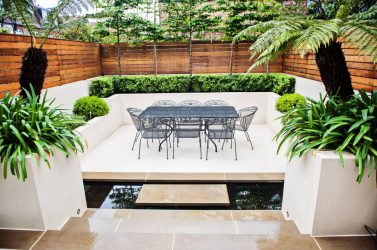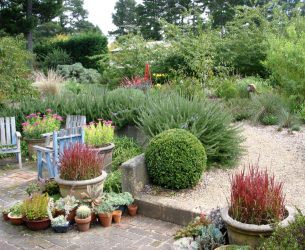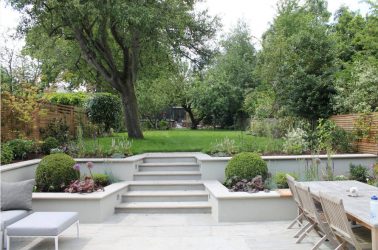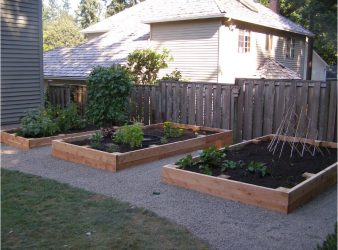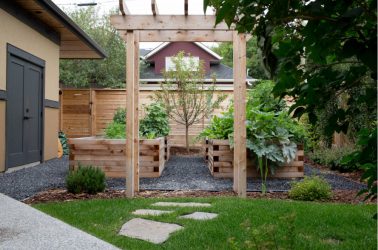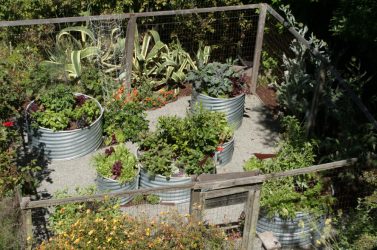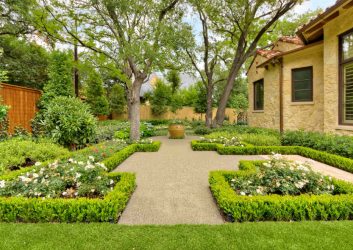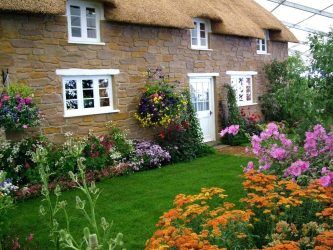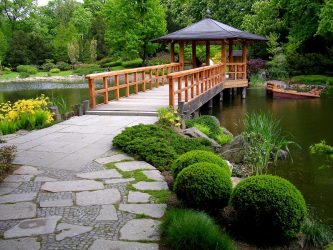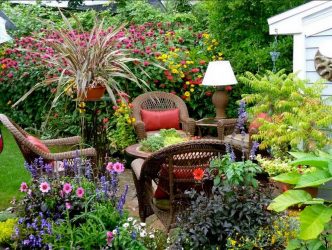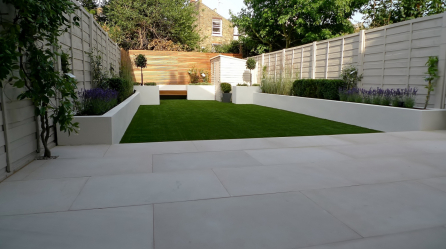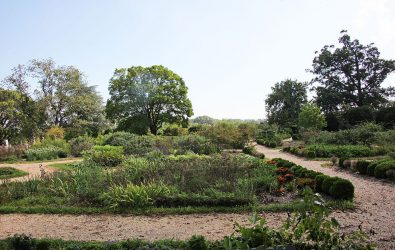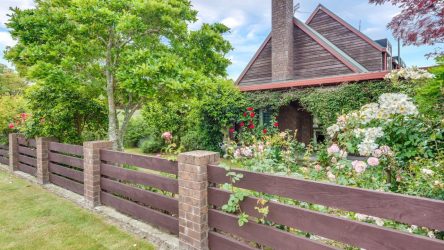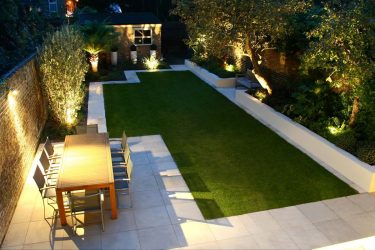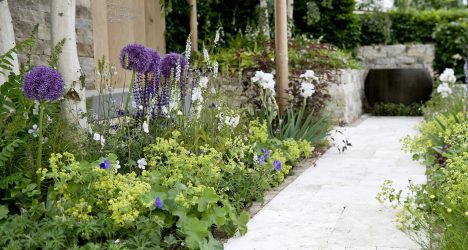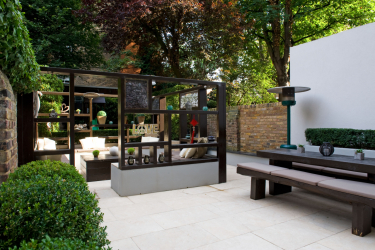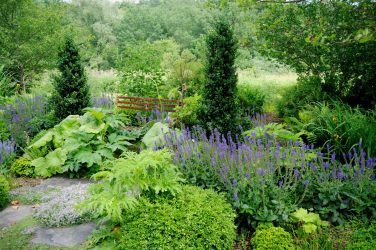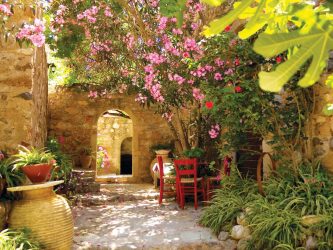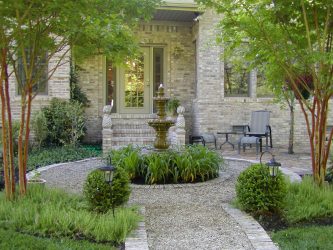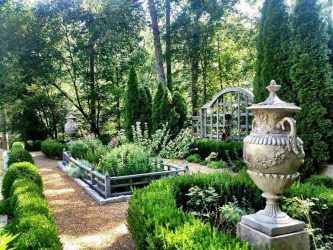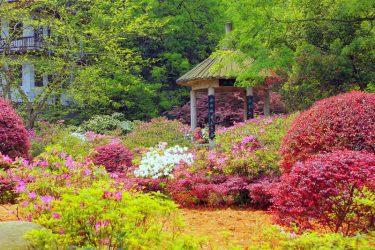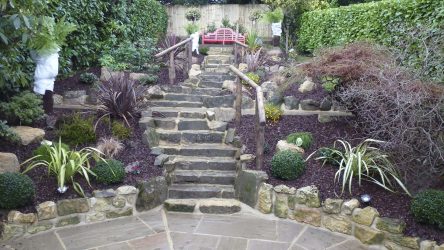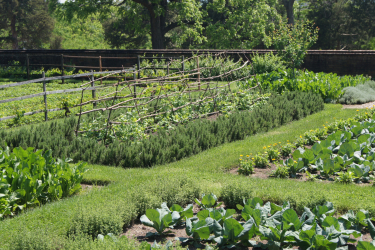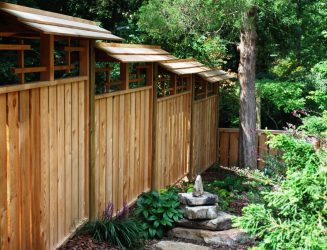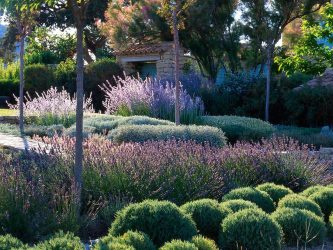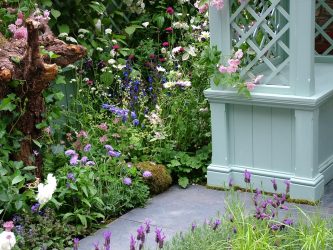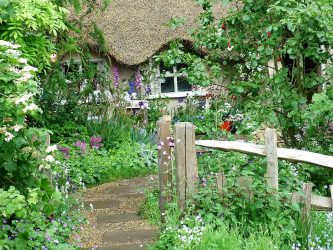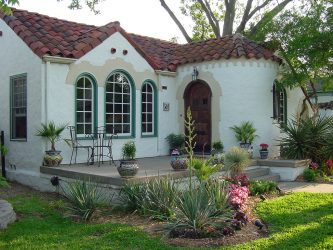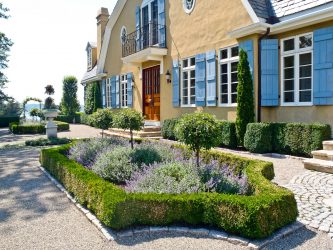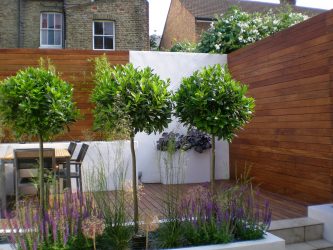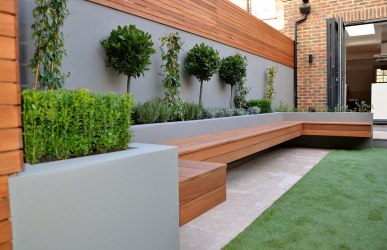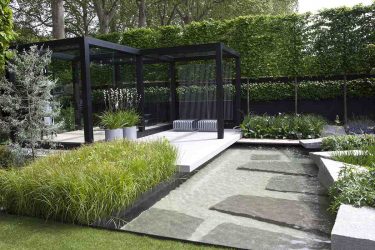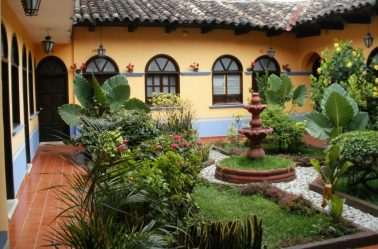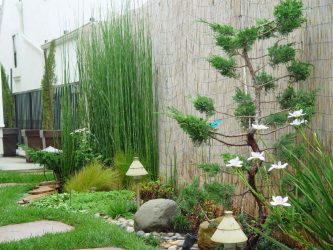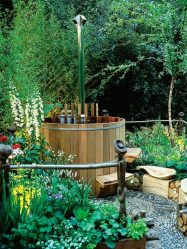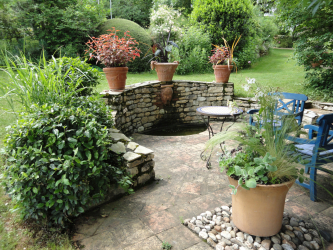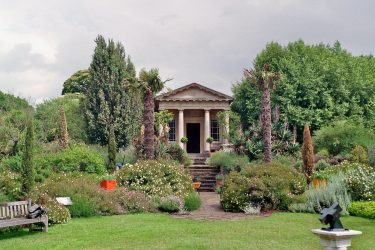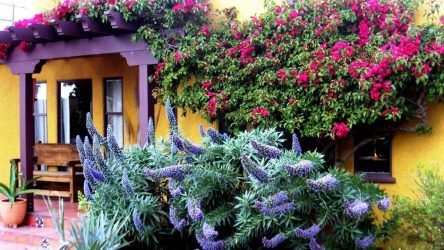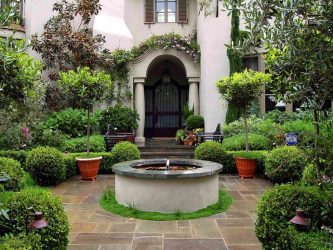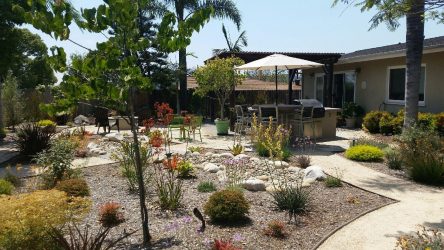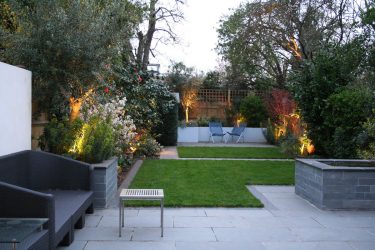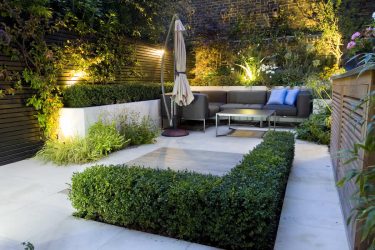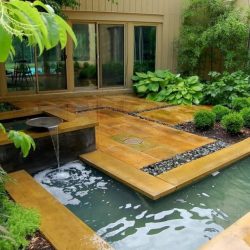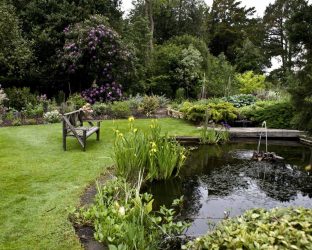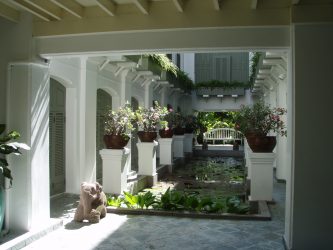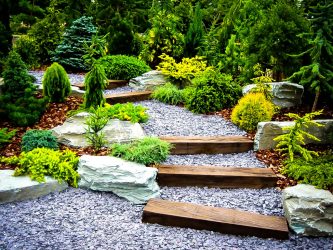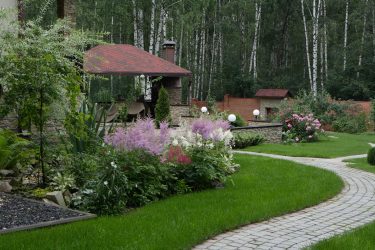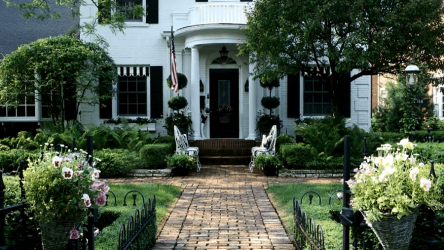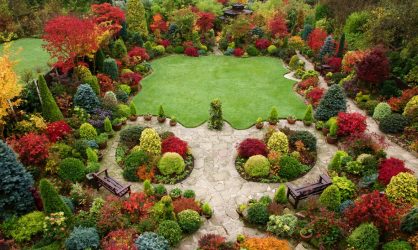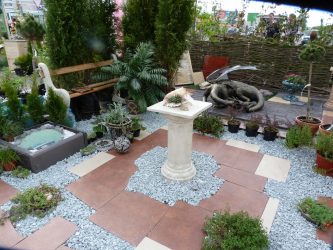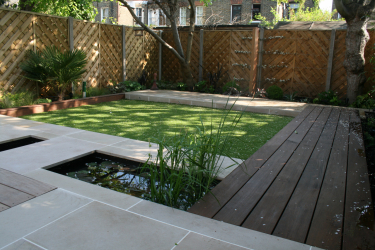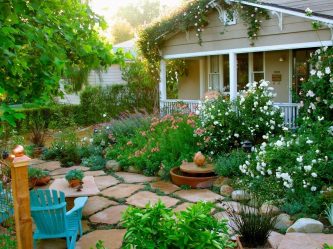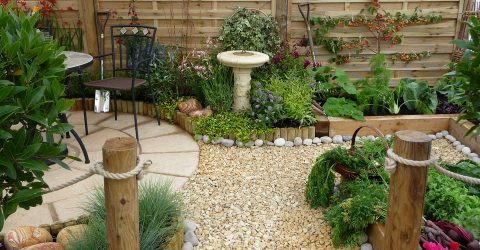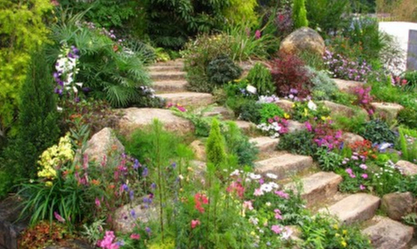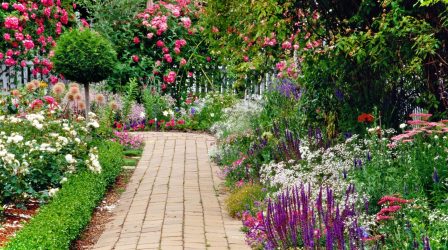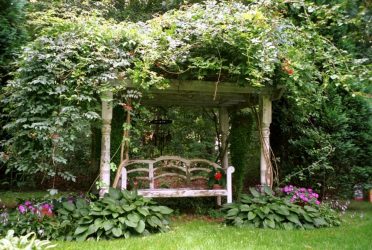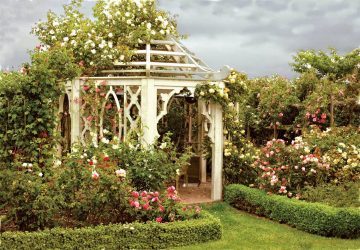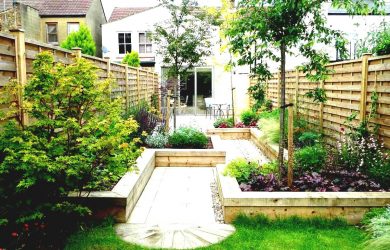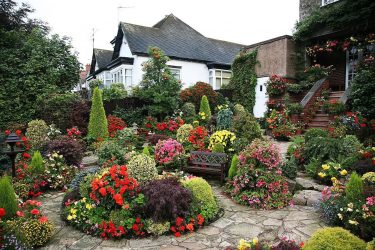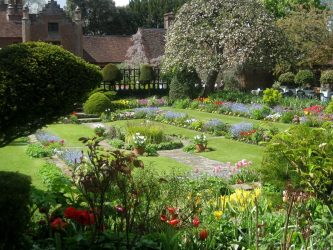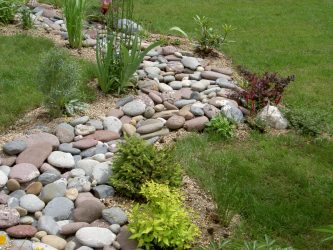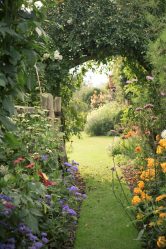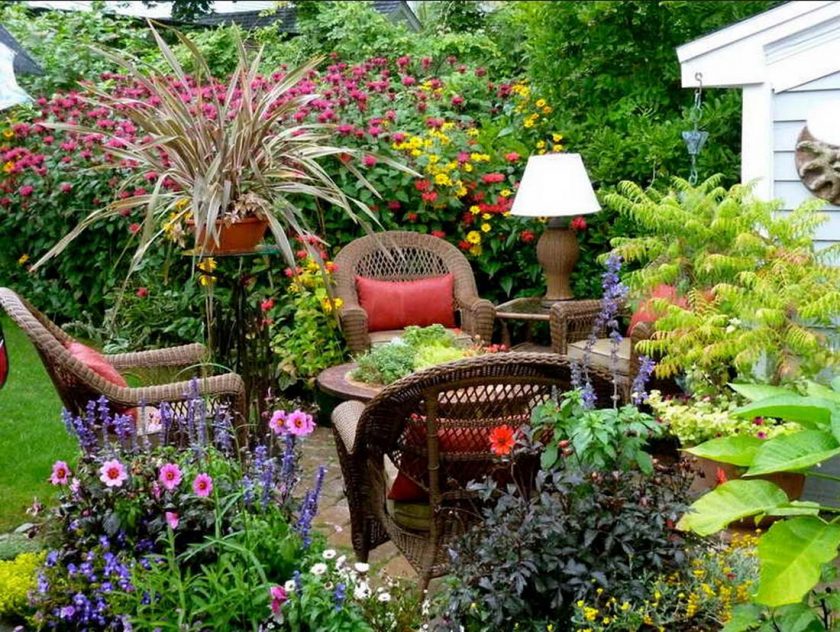
Creating a garden design always begins with styling. Consider why this is so important.
Content:
What is garden style?
Wanting to transform the old garden or arrange a new one, we take a pencil, paper in our hands, and draw a sketch of a future project. But you do not need to start with this. Long before your pencil touches the paper, you need to determine the style.
Style is a collection of elements that form its complete image.. Style defines everything, from the planning decision of the site, to the selection of plants and decor. Garden is not clothing - it can be used for decades, and therefore it is worth paying enough attention to its styling. The first thing you can do is learn more about existing design trends.
return to menu ↑French
The named style is also called “classic” or “geometric”. It originated in the era of the French king Louis XIV. Famous gardens of Versailles - the main source of inspiration for fans of this direction.
The following features are typical for classic French:
- strict geometry and symmetry of all elements, structures;
- pronounced composition axis;
- clear plan with strict lines;
- ornamental flower garden;
- the prevalence of plants that can be cut, long-lasting shape (used to create topiarnyh figures).
The garden, fully sustained in French, can be found not so often. However, the use of its individual elements or design in a classic particular area is very popular.
For example, you can use such a refined geometric element as a maze. Even in a small area it is possible to arrange a fragment of muddy paths with the help of a curb of cropped shrubs or a lawn.
return to menu ↑English
In English or landscape, the key role played by the unity of man with nature. Therefore, it is always closest to the natural landscape.
This direction arose as a counterweight to the French. His first masters drew inspiration from paintings by famous painters, namely Claude Lorrain, Nicolas Poussin. Landscape distinguish:
- imitation of natural landscapes;
- randomness of decorative elements;
- planting plant hierarchy;
- lack of straightness and symmetry.
English is considered one of the least expensive. This is because minimal changes are made to the existing landscape.
Oriental
In such a garden everything has to languishing, bliss. The Hanging Gardens of Babylon, which were included in the list of 7 wonders of the world of antiquity, were performed exactly in the east. Until our time, they have not survived, but we have the gardens of the Alhambra in Spain, which the described direction is also called "Moorish."
Among the characteristic features of the eastern stands out:
- a reservoir (pond, fountain or canal) is the center of the composition;
- geometric correctness of the layout;
- decorative paving, made of colored tiles or stone;
- covered galleries, arches entwined with plants;
- the rose garden, whose elements are selected by color, aroma;
- patio.
The patio deserves attention. It is important that it be closed, opaque. Create a space inaccessible to prying eyes, you can with the help of densely planted tall shrubs and trees.
return to menu ↑Mediterranean
Mediterranean is a mix of Roman, ancient Greek and modern traditions. It imitates the atmosphere of southern cities with their small streets, fragrant plants, and cozy terraces. The design of the Mediterranean calls to forget about the bustle, to devote time to rest.
The main distinguishing features of the Mediterranean:
- soft color scale (yellow, blue, orange, red colors);
- tracks of sand, pebbles, terracotta;
- terracotta pottery, culture;
- clearly marked recreation area (most often it is a terrace with garden furniture).
In the Mediterranean, water plays an important role. So, it is worth thinking about an artificial pond, pool, fountain or cascade. It is the murmur of water that immerses into the atmosphere of the Mediterranean.
Dutch
Dutch seems to be something like a flower bed dotted with multi-colored tulips. In fact, it is a bright style, full of individual elements. It has the following characteristics:
- modest size;
- contrasting bright colors;
- extensive use of bulbous plants (tulips, hyacinths, crocuses, daffodils);
- tracks of regular geometric shape;
- well-kept lawn;
- no high growing trees.
The first violin in Dutch is played by flowers, which does not preclude the use of undersized evergreens, such as juniper or dwarf thuja. The main thing is not to overshadow the trees, but to complement the beauty of flowers. Dutch is ideal for owners of small areas.
Japanese garden
Design that will not leave you indifferent
Garden in modern
Modern - an option for supporters of minimalism. The garden in modernity is connected by an ornamental rhythm, subordinated to a single symbolic concept. Herbal compositions are used for the decoration of buildings, and the lines of the facade are repeated.
Features:
- simplicity of lines;
- the absence of a large number of plants and additional details;
- geometric layout;
- repeatability of motives;
- large amount of free space.
There are few plants, however, they need to be picked carefully and placed carefully. If we talk about trees, it is better to choose owners of non-standard crown or a unique color of leaves. As for flowers, white lily, phlox, red mallow, roses, daffodils and peonies are welcome.
return to menu ↑Colonial
This style was invented by American colonists. In it intertwined British restraint, American emancipation.
The following features are characteristic of the colonial style:
- compositional negligence;
- paving of exclusively natural materials;
- active use of small architectural forms (arches, verandas, arcades, arbors, benches);
- love for wooden and stone sculptures depicting animals;
- plants planted in tubs of terracotta.
In the period of their emergence colonist gardens had an important practical importance. An echo of the time was that flowers can grow with medicinal herbs. In addition, the colonial admits the presence of a small vegetable garden, fenced off by a picket fence.
return to menu ↑Fantasy
This is for lovers of secrets, legends and fairy tales. The fantasy style successfully uses what other directions consider a disadvantage, from the irregularities of the site to the remnants of the old structure. The key elements of fantasy are:
- winding paths;
- stone compositions;
- decorative grottoes;
- hidden zones;
- fragments of ancient ruins;
- vertical gardening.
When choosing a fantasy, remember that it must be in harmony with the house. The integrity of the composition will emphasize the basement of the house, trimmed with stone. You can get ideas for decoration from films, as well as books in the same style.
As for landscaping, the most common species of loess trees, shrubs of unusual shape will do. Fairy tales add hedge from hop or climbing rose. Worth a look at the fern.
return to menu ↑Japanese
This style is a whole philosophy based on contemplation and a sense of beauty. The Japanese garden is a combination of 5 components: ideas, water, stones, plants, architectural elements. This is a place for admiring nature, deep thought, tea ceremonies.
Japanese can be recognized by the following features:
- connection of dynamic and static parts;
- lack of straight lines and symmetry;
- use of elements of Japanese culture;
- the presence of a small waterfall, a pond of irregular shape or a running stream;
- discreet decor.
Japanese is distinguished by a special attitude to the stone, which the Japanese consider to be the highest creation of nature. Stones are selected by texture, shape and color. It is important that they fit organically into the landscape.
As for the flora, it is difficult to imagine Japanese without sakura, pine, lotus, Japanese maple, barberry bushes, cubes (Japanese camellia).The Japanese are associating the plants with certain artistic images. For example, sakura flowers personify purity, durability, all because they never fade on a tree, even lying on the ground, remain fresh for a long time.
Japanese mentioned last for good reason. On his example, I want to show how you can stylize a garden on the most usual summer cottage.
Landscaping garden
All the beauty that is easy to do with your own hands
Creating a Japanese garden: step by step instructions
Creating a Japanese garden - the process is incredibly fascinating. But the laboriousness of the upcoming work can extinguish any fuse. The step-by-step instruction presented below will help bring the matter to a logical end.
return to menu ↑Step 1. Planning
You should start with an assessment of the characteristics of the site that you have. Planning is impossible without taking into account the features of the relief. Then it is necessary to draw up a rough plan, think over individual elements.
return to menu ↑Step 2. Choosing stones
It is important to pick up samples of uniform color gamut. The easiest option is to install the selected instances in the center of the composition.
Remember that you should not pile stones on each other. It is better to fill the formed voids with sand mixed with fine fraction gravel. The combination of light sand and dark boulders looks most impressive.
return to menu ↑Step 3. Selection of plants
To create a Japanese garden, you can use coniferous crops, creeping bushes, climbing and ground cover plants. Perfectly suitable green plants with small leaves, low-key flowers. Dwarf plants will also look advantageous.
If we talk about specific examples, among the trees it is: pine, maple, sakura (can be replaced with Raksa cherry). As a hedge, you can use the barberry. The best flowers for Japanese are peonies, chrysanthemums and rhododendrons.
Try to pick plants of uniform shape, then it will look more harmonious. A note of originality can make a zone dedicated to mosses.
return to menu ↑Step 4. Organization of additional elements
The best addition to a Japanese garden is a tea house. If the creation of such an element is too laborious for you, you can stop on a small garden bridge. It, like most other decor, can be purchased in finished form.
Lighting plays a major role. Paying attention to it, you can enjoy beauty at any time of the day. It is best to buy special Japanese lights, of which there are plenty of varieties.
Styling is a process that requires a considerable amount of time, effort, and sometimes funds. However, any owner of a beautiful garden will confirm that the result is worth it.
Japanese landscape
Practical and stylish ideas
